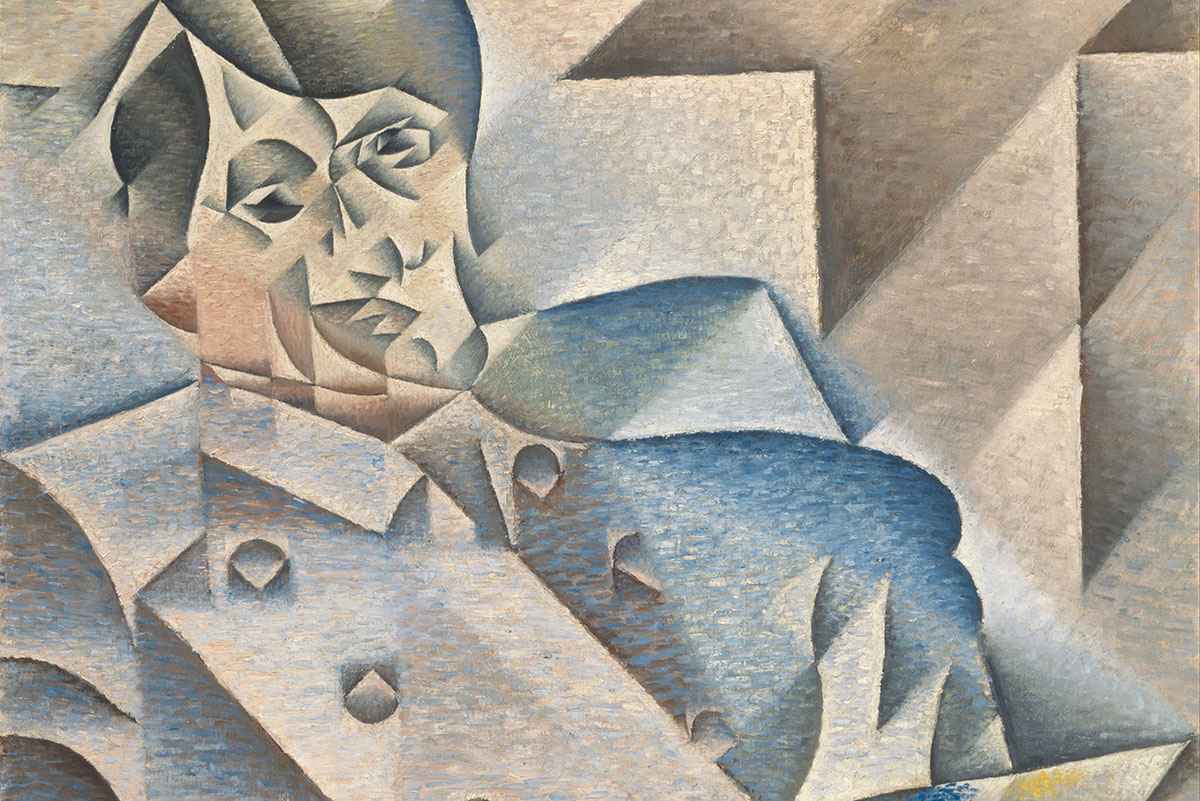
The women appear to be surrounded by an assortment of colorful fabrics, but the latter are draped as if they are completely stiff. Another feature of primitivist and cubist art is the lack of perspective and differentiation between people, objects, and backgrounds. The noses, eyes, and mouths look completely artificial and differ from the three other faces on the canvas. These faces have been inspired by masks, and it feels as though the women are actually wearing them. However, the two women on the right have the most simplified features. The woman on the left is seen from her side, and her eye is the same shape as the one depicted from the front (Picasso). Their faces are also extremely asymmetrical and disproportionate. For example, the woman in the top-right is the least realistic, and her body is composed of several differently shaped rectangles. Picasso uses a range of figures – some of them are circular, but the majority are sharp, including rectangles and triangles. The bodies are angular, and the main shapes and scarce lines only indicate the poses in which the women stand or sit. First of all, Picasso paints the silhouettes of women rather than their realistic proportions on the canvas. Les Demoiselles d’Avignon is a clear example of a primitivist work, and its brashness is a statement for freedom in art. In 1907, Picasso became interested in cubism and primitivism, styles that aimed to break down the limits of proportion and norm. Artistic TechniqueĪpart from the painting’s subject, the technique used by Picasso further amplifies the feelings of unease and confrontation. Exploring the culture, it can be assumed that Picasso was inspired by African masks, one of the staples of regional art. In addition, some of the faces differ in color, which will be discussed in more detail later. Almond-shaped eyes are placed asymmetrically, their large noses are turned to the side, and their mouths are reduced to a single line. The fascination with foreign and ancient cultures shows in Les Demoiselles d’Avignon – the women’s faces resemble masks more than natural expressions. Although Picasso lived in France, he was born in Spain, and it is clear that the influence of this historical location impacted his cultural interests. One of these fascinations was primitive art and the cultures of Africa and the Iberian Peninsula – the location of present-day Portugal and Spain (“Les Demoiselles d’Avignon”). He became interested in styles and techniques that rejected the norms of proportion, color, and expression and studied other cultures to see their view of the world deeply. At that time, he was a 25-year-old man who lived in France and worked alongside other painters, sculptors, and artists (“Les Demoiselles d’Avignon”). The artist painted Les Demoiselles d’Avignon relatively early in his career, in 1907 (Picasso). This could have been Picasso’s intention – to create a work of art so scandalous and unthought-of that the observer could not look away. The women stare at the audience, and their bodies seem to take up the entirety of the large canvas. In contrast, it awakes a sense of being too close to the subjects of the painting. The feeling of comfort often inspired by art is completely absent when observing this painting. The work is striking – it is aggressive, raw, and mysterious. Social Contextįrom the first moment of looking at the painting, Les Demoiselles d’Avignon attracts one’s attention. The present essay explores the different aspects of Les Demoiselles d’Avignon, including Picasso’s desire to deny the then-existing norms, his role in the development of cubism, and the colors used in the painting.

It is undoubtedly one of the most intriguing paintings by Picasso, although its composition and subject are simplistic. Today, looking at Les Demoiselles d’Avignon, I cannot deny the variety of negative and positive emotions that this painting produces.


The history of this painting expands beyond its reveal in 1907, both to the past, where Picasso came up with the idea and to the future, as it is still a puzzling work for many. The name of this work translates to “The women of Avignon,” and it depicts five women – naked prostitutes –in a primitive and aggressive technique. This can be said of Les Demoiselles d’Avignon, one of the paintings which Picasso painted during his early years. His works are recognized worldwide, and the debates surrounding numerous creations are still ongoing. Pablo Picasso’s name is known even to people who are not interested in art, whether traditional or modern.


 0 kommentar(er)
0 kommentar(er)
